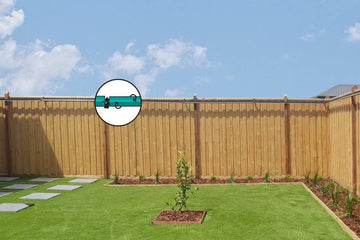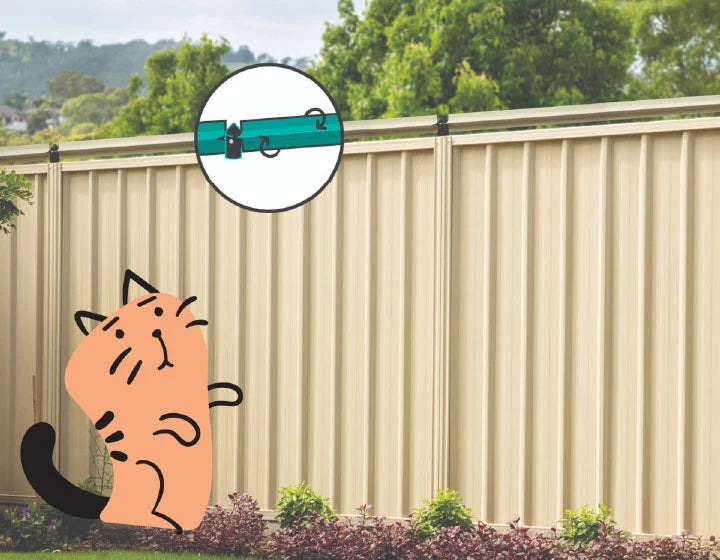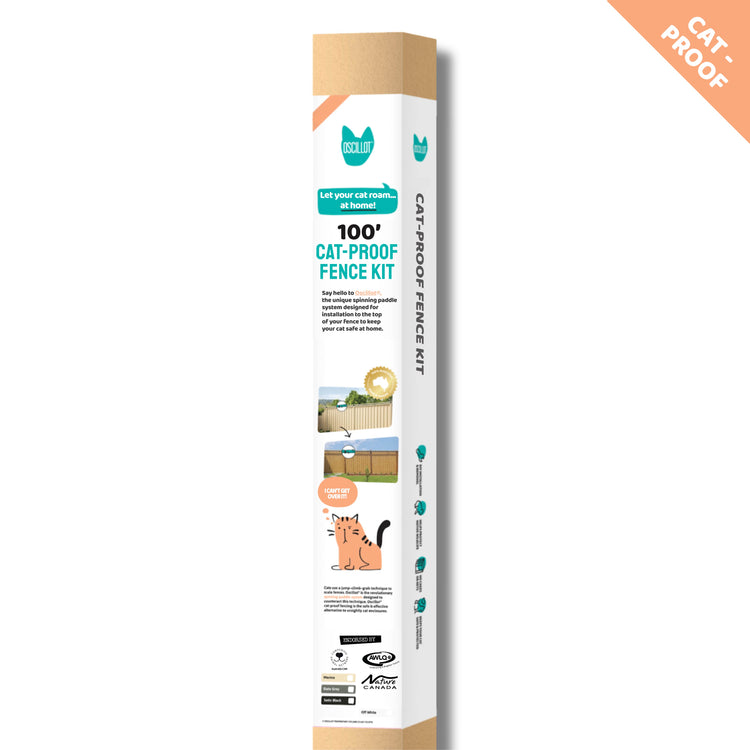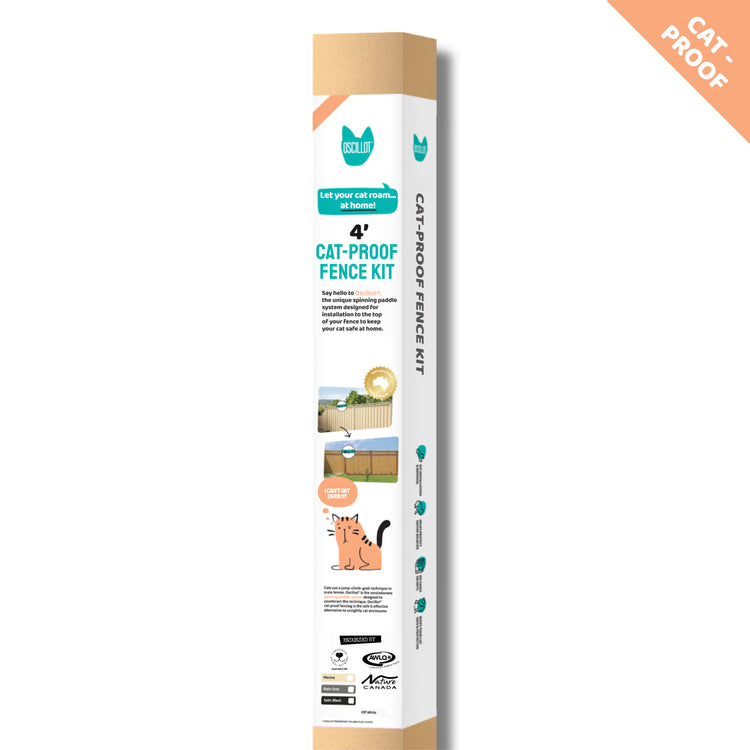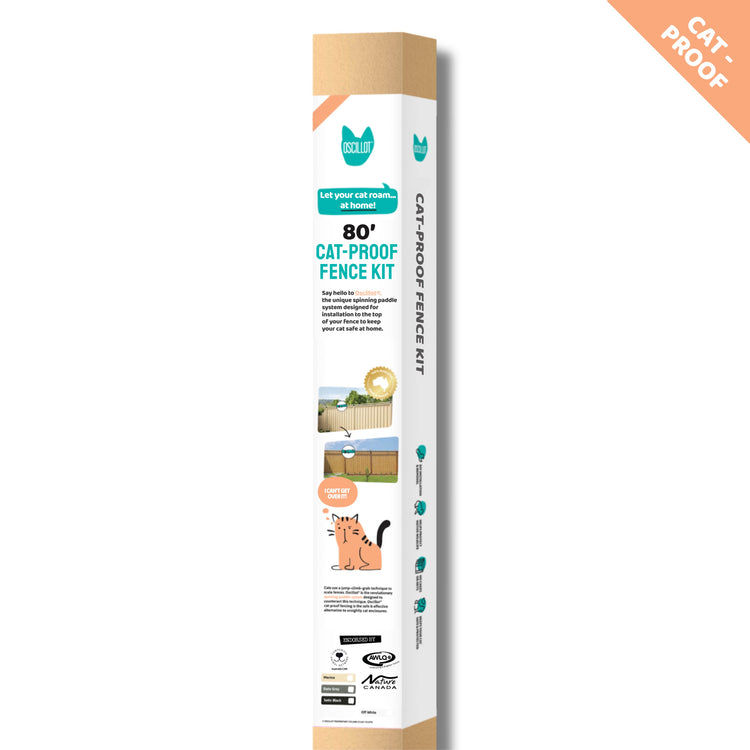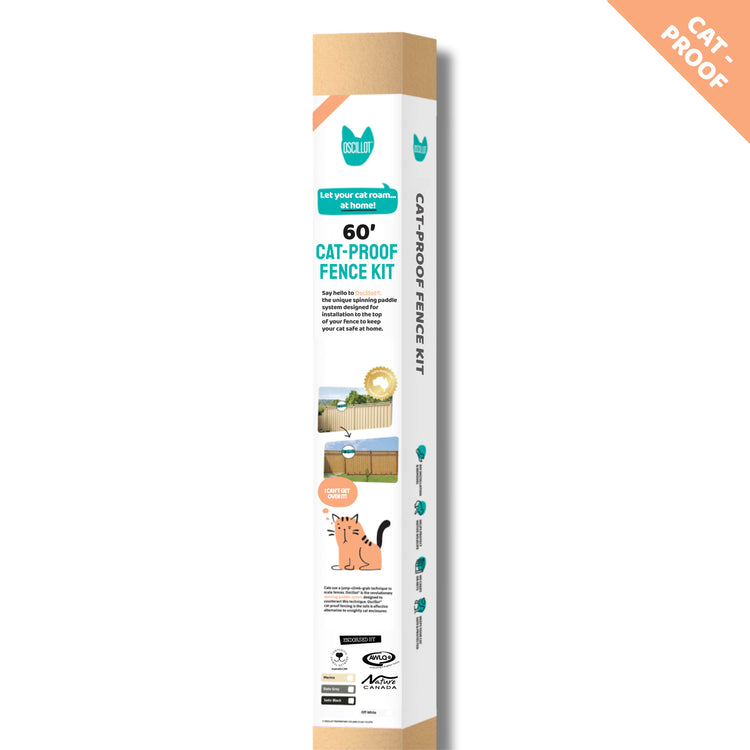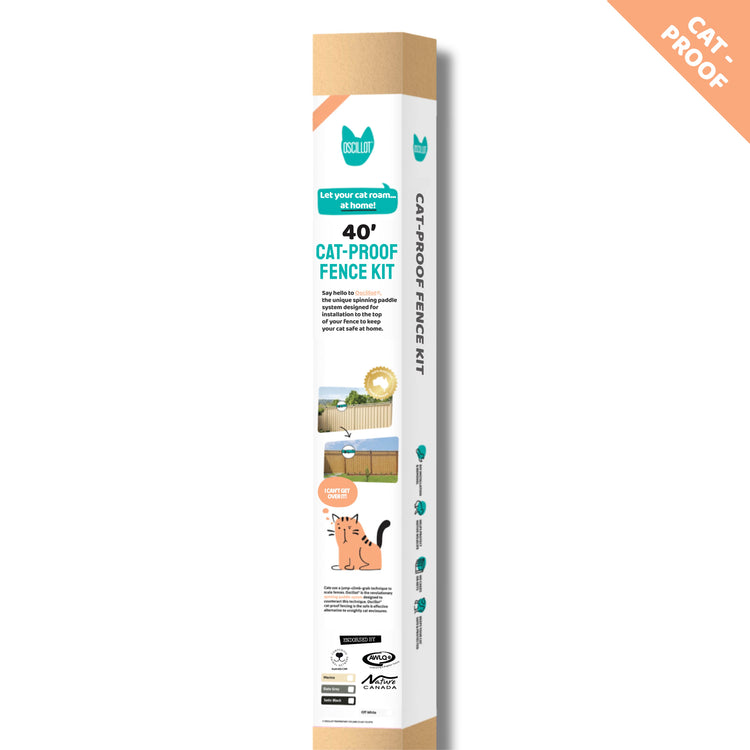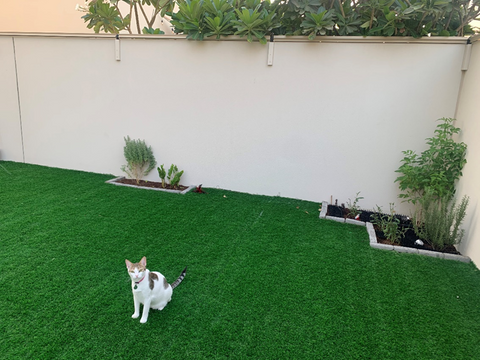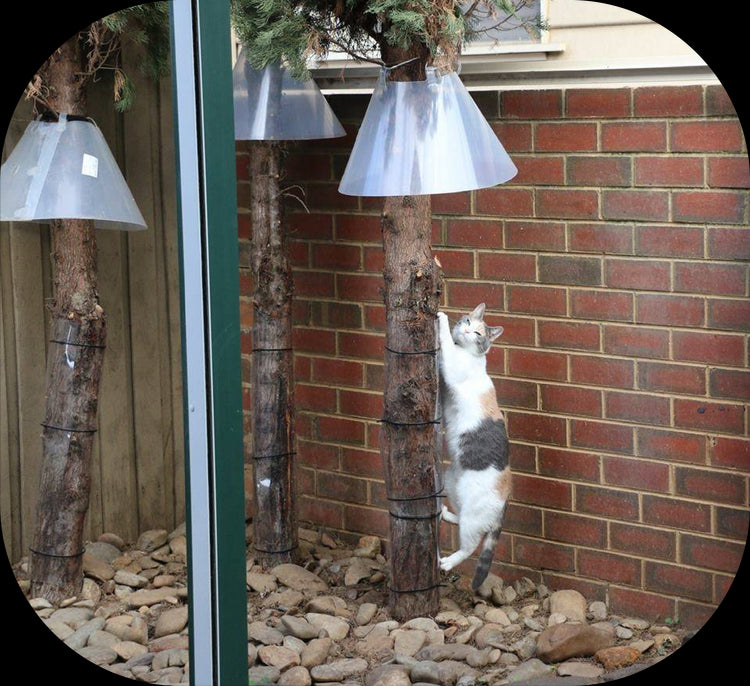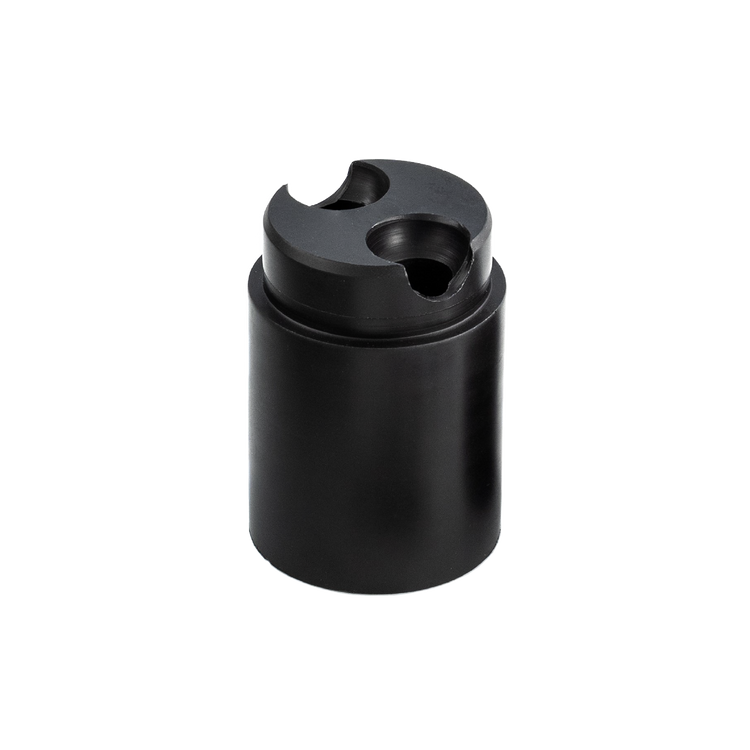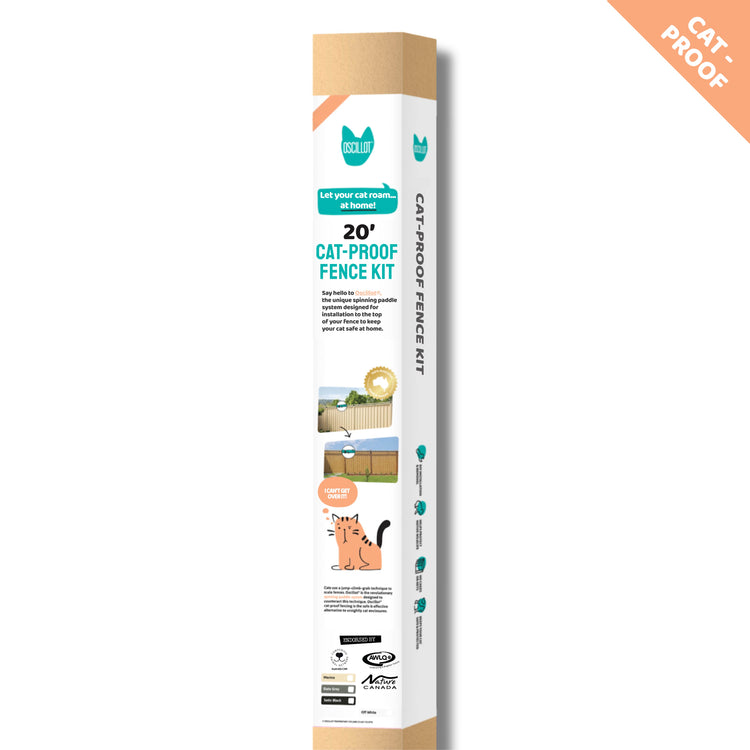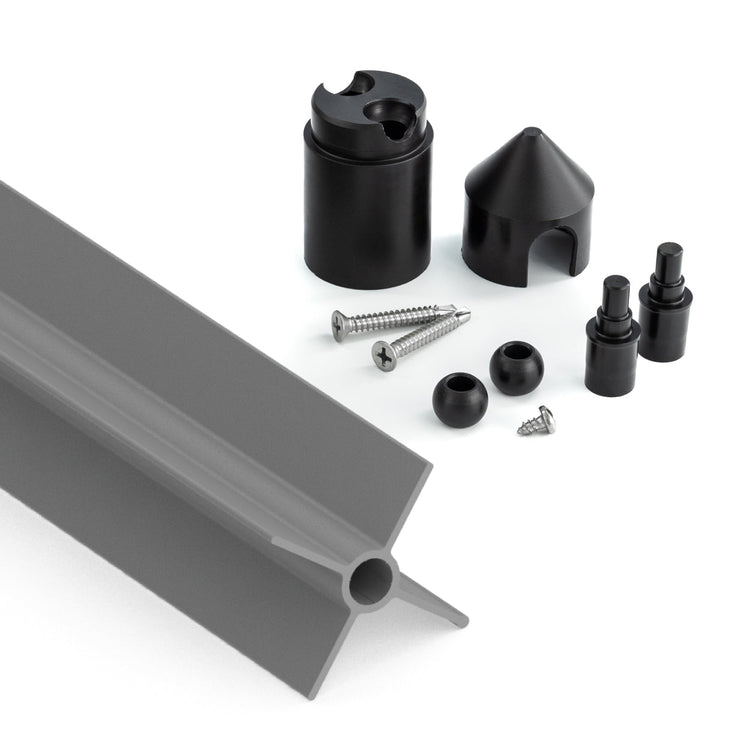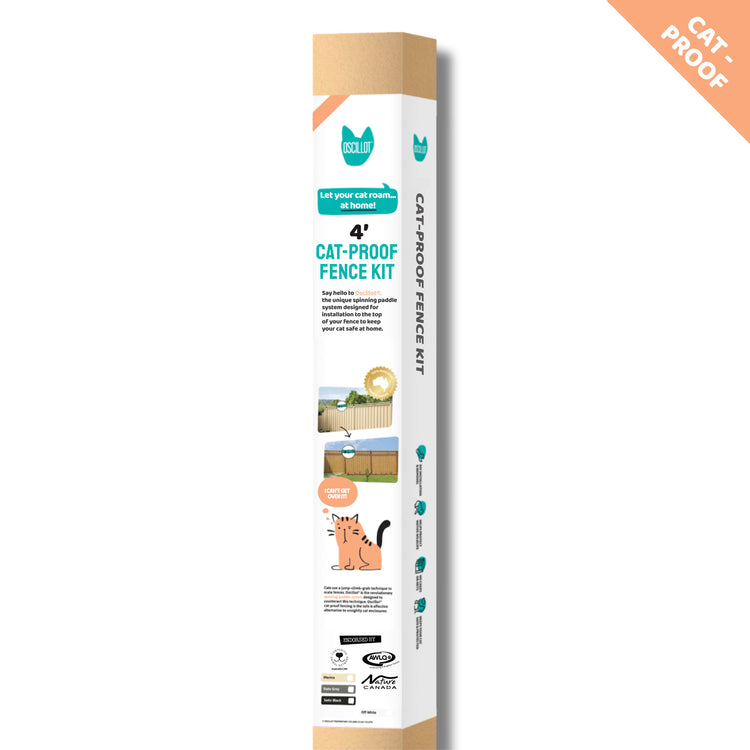How to Build Accessible Outdoor Enclosures for Cats with Joint Issues

- Oscillot cat containment systems provide safe outdoor access for cats with mobility limitations
- Fence kits ranging from 4 to 300 feet accommodate various yard sizes and cat needs
- DIY installation is straightforward with complete kits including all necessary hardware
- Systems are specifically designed to be gentle on cats with arthritis or joint problems
- Proper design considerations include easy access points, comfortable resting areas, and shade
- All components are weather-resistant and made to withstand diverse American climate conditions
Introduction to Creating Safe Outdoor Spaces for Cats with Joint Issues
Cats with joint issues deserve the mental stimulation and enrichment that comes from outdoor access, but they need special accommodations to ensure their safety and comfort. Arthritis and joint problems affect approximately 90% of cats over 12 years old, making mobility a significant concern for many feline companions. Creating accessible outdoor enclosures allows these cats to enjoy the benefits of nature while minimizing pain and discomfort, providing both physical and psychological benefits that can significantly improve their quality of life despite their physical limitations. When designing outdoor spaces for cats with joint problems, it's essential to consider their specific needs. These cats may struggle with jumping, climbing, and navigating uneven surfaces. A well-designed enclosure takes these limitations into account while still providing mental stimulation and environmental enrichment. Cat-proofing solutions like the Oscillot system can create safe boundaries without requiring cats to navigate difficult terrain, allowing them to move freely within their physical capabilities while still maintaining security.With the right approach, cats with arthritis or other joint issues can safely enjoy the sights, sounds, and smells of the outdoors without putting themselves at risk of injury or escape. Let's explore how to create these accessible spaces using appropriate containment systems and thoughtful design principles that accommodate feline mobility challenges while maximizing enjoyment and comfort.
Understanding Joint Issues in Cats and Their Outdoor Needs
Before designing an outdoor space for cats with joint problems, it's important to understand how these conditions affect their mobility and comfort. Degenerative joint disease affects approximately 45% of all cats and 90% of cats over age 10, though many cases go undiagnosed because cats naturally hide signs of pain. This evolutionary adaptation makes it challenging for even attentive pet owners to recognize when their cats are suffering from painful joint conditions until symptoms become quite advanced. Signs of joint issues in cats include decreased jumping ability or jumping to lower heights than previously observed, hesitation before climbing stairs or using cat trees that were once favorite perches, changes in normal movement patterns such as limping or favoring certain limbs, stiffness especially after resting for extended periods or upon waking, reduced grooming particularly in hard-to-reach areas like the lower back and hind legs, and changes in litter box habits due to difficulty getting in and out of traditional boxes.Despite these limitations, cats with joint problems still benefit greatly from outdoor access. Fresh air, natural light, and environmental stimulation are important for their mental well-being. Outdoor access can help older cats maintain muscle tone through gentle movement while providing enrichment that indoor environments alone cannot match. Research indicates that sensory stimulation can help maintain cognitive function in aging cats, making safe outdoor access particularly valuable for senior felines with joint issues.
The key is creating outdoor spaces that accommodate their physical limitations. This means designing enclosures with easy access points without high steps or jumps that could cause pain or falls, multiple comfortable resting areas strategically placed throughout the space, protection from extreme weather conditions that might exacerbate joint pain, secure boundaries that prevent escape without requiring climbing or jumping, and gentle terrain with stable footing to prevent slips and reduce impact on joints.
Oscillot cat containment systems are particularly well-suited for cats with joint issues because they focus on securing the perimeter rather than requiring cats to navigate difficult terrain. This allows cats to enjoy outdoor freedom within their physical capabilities while maintaining the security that both cats and their owners need for peace of mind.
Choosing the Right Containment System for Cats with Mobility Limitations
When selecting a containment system for cats with joint issues, it's essential to prioritize options that don't require cats to jump or climb to enjoy outdoor access. The Oscillot cat containment system offers an ideal solution because it secures existing fences without creating obstacles for cats with limited mobility, functioning as a preventative barrier rather than a physical challenge for the cat to overcome. The Oscillot system works by attaching rotating paddles to the top of existing fences. When cats attempt to climb over, the paddles rotate, preventing them from getting a secure grip. This creates a humane barrier that keeps cats within the yard without causing stress or discomfort. For cats with joint issues, this means they can freely explore the yard without encountering challenging obstacles or experiencing the pain that might come from attempting to navigate more traditional containment systems like netting or mesh barriers.Oscillot offers kits in various sizes to accommodate different yard dimensions. Small kits ranging from 4 to 12 feet are perfect for securing specific areas like gates or garden sections where cats might otherwise find escape routes. Medium kits from 20 to 60 feet are ideal for partial yard containment or smaller properties with limited perimeter requirements. Large kits from 80 to 300 feet are designed for complete perimeter security on larger properties with extensive boundaries. When selecting the appropriate kit size, consider the total perimeter of the area you want to secure by measuring carefully to ensure complete coverage, the existing fence condition and height with a minimum 6 feet recommended for optimal security, any potential escape routes that need special attention such as trees near the fence line or areas with irregular terrain, and access points for humans that won't compromise security while still allowing easy maintenance of the space.
For cats with joint issues, DIY installation of Oscillot kits allows you to customize the setup to accommodate their specific needs. You can create wider entry points, ensure smooth transitions between surfaces, and position the system to work with any existing accessibility features in your yard. The flexibility of the system means you can adapt it to your cat's particular mobility challenges while maintaining the security needed to keep them safely contained.
Design Considerations for Joint-Friendly Outdoor Spaces
Creating an accessible outdoor enclosure involves more than just securing the perimeter. The internal design of the space should accommodate the specific needs of cats with joint issues, making movement comfortable while still providing enrichment. Thoughtful design can make the difference between a space your cat rarely uses and one that becomes a favorite destination for daily enjoyment. Terrain and Surfaces For cats with arthritis or joint pain, the ground surface is particularly important. Create level pathways with smooth non-slip surfaces that provide stable footing. Avoid steep inclines or steps when possible, as these can be difficult and painful to navigate. If elevation changes are necessary, install gentle ramps with good traction and side barriers for safety. Use soft materials like rubber mulch or artificial turf in rest areas to cushion joints during movement. Ensure drainage is adequate to prevent slippery wet surfaces that could lead to falls or discomfort. Consider using interlocking foam tiles in key areas to provide cushioning for sensitive joints.Rest Areas and Shelter Cats with joint issues need comfortable places to rest throughout the enclosure. Position multiple cushioned beds or platforms at ground level for easy access without jumping. Include sheltered areas to protect from sun, wind, and rain that might exacerbate joint discomfort. Place resting spots in both sunny and shaded locations to allow temperature regulation based on the cat's needs. Use orthopedic beds or heating pads in cooler weather to help reduce joint stiffness and pain. Ensure rest areas are easily accessible without jumping or climbing and positioned along natural pathways. Create some enclosed resting spaces that provide a sense of security while allowing visibility. Enrichment Features Even with limited mobility, cats need mental stimulation. Plant cat-safe grasses and herbs at ground level for sensory enrichment without requiring stretching. Install bird feeders outside but visible from the enclosure to provide visual stimulation. Create sensory experiences with different textures and scents that can be enjoyed from a resting position. Position low scratching surfaces that don't require stretching or reaching uncomfortable heights. Include toys that can be batted without requiring jumping or significant exertion. Consider adding butterfly gardens or other natural features that bring movement to the cat's eye level.
Access Points How cats enter and exit the enclosure requires special attention. Install cat doors at ground level rather than requiring jumps that could cause pain. Ensure doorways are wide enough for cats who may move cautiously or with an altered gait. Use flexible flaps that don't require pushing with significant force that might strain joints. Create gradual transitions between indoor and outdoor spaces to prevent jarring movements. Consider automated doors for cats who might struggle with manual ones, triggered by microchip or collar sensor. Install ramps rather than steps if elevation changes are unavoidable at entry points.
Oscillot systems are particularly beneficial for sensitive cats, including those with joint issues, because they create secure boundaries without adding physical obstacles that might cause pain or discomfort. This allows you to focus on creating an internal environment that accommodates your cat's specific mobility challenges while maintaining the security needed to keep them safely contained.
Installation Tips for Oscillot Systems in Joint-Friendly Enclosures
Installing an Oscillot cat containment system to create a joint-friendly outdoor space requires careful planning and execution. The good news is that the system is designed for DIY installation, allowing you to customize the setup for your cat's specific mobility needs without requiring professional expertise or specialized tools. Pre-Installation Planning Before beginning installation, assess your cat's specific mobility limitations to identify potential challenges and accommodate them in your design. Measure your fence perimeter accurately to purchase the appropriate kit size, adding extra length for any irregularities. Inspect your existing fence for stability and repair any weak points that might compromise the system's effectiveness. Identify potential escape routes including trees near the fence line that might need tree guards. Plan access points that will be comfortable for cats with joint issues, ensuring smooth transitions between areas.Step-by-Step Installation Process The basic installation process includes preparing the fence surface by ensuring the fence top is clean, stable, and free from protruding nails or splinters. Mark bracket positions by spacing brackets according to the instructions, typically every 6.5 feet for optimal support. Attach brackets to the fence using appropriate hardware for your fence material whether wood, metal, or vinyl. Install paddles by connecting the rotating paddles to the brackets, ensuring they rotate freely without obstruction. Secure corners and transitions by paying special attention to corners and areas where fence height changes to prevent gaps. Test the system by checking that paddles rotate freely and create an effective barrier before allowing cat access. Special Considerations for Cats with Joint Issues When installing for cats with mobility limitations, install cat tree guards on any trees within the enclosure that might serve as escape routes, as cats may still attempt to climb despite joint pain. Ensure gates have the same protection as the rest of the fence but remain easy for humans to use without creating obstacles. Pay special attention to the bottom of the fence to prevent cats from squeezing underneath, as some may explore this option when climbing is difficult. Create gradual transitions between different areas of the yard to prevent jarring movements that could cause pain. Install cat doors at ground level with minimal threshold height to facilitate easy movement between indoor and outdoor spaces.
Weather Considerations Since cats with joint issues may be more sensitive to weather conditions, install the system to withstand local weather patterns, ensuring it remains effective year-round. Consider how snow accumulation might affect access in winter months and plan for clearing paths if necessary. Ensure drainage is adequate to prevent water accumulation that could create slippery conditions. Check that materials won't become too hot in direct sunlight, which could be uncomfortable for cats with limited mobility. Plan for seasonal adjustments to the enclosure's internal features based on weather patterns in your region.
The Oscillot system is designed to be durable in various weather conditions, with UV-resistant materials that won't degrade in sunlight and corrosion-resistant hardware that can withstand moisture. This durability makes it an excellent long-term solution for creating a secure boundary for cats with joint issues, requiring minimal maintenance while providing consistent protection.
Creating Comfortable Resting Areas Within the Enclosure
Cats with joint issues need strategically placed, comfortable resting areas throughout their outdoor enclosure. These spaces allow cats to take breaks while still enjoying the outdoor environment, making the entire experience more pleasant and accessible. Proper resting areas can significantly extend the amount of time your cat can comfortably spend outdoors. Types of Resting Surfaces Different resting surfaces provide various benefits for cats with joint pain. Orthopedic beds provide cushioning that relieves pressure on painful joints and supports proper alignment. Heated pads offer warmth that can reduce stiffness and discomfort, particularly beneficial in cooler weather. Memory foam mats conform to the cat's body for maximum support and pressure distribution. Hammock-style beds distribute weight evenly for some cats though these should be positioned low to the ground. Grass patches provide natural soft surfaces for cats who enjoy lying on the ground while offering sensory stimulation. Cooling mats help regulate body temperature during warmer months when overheating might exacerbate discomfort.Strategic Placement Position resting areas strategically throughout the enclosure. Place beds in both sunny and shaded locations to allow temperature regulation throughout the day. Position some near entry and exit points for easy access when cats need to retreat indoors. Create resting spots with good visibility of surroundings for cats who like to observe wildlife and activity. Include private sheltered areas for cats who prefer seclusion when resting to reduce stress. Ensure each area is easily accessible without climbing or jumping and connected by smooth pathways. Consider your cat's preferred resting spots indoors and create similar options in the outdoor space. Weather Protection Ensure resting areas are protected from weather extremes. Install small shelters or canopies to protect from rain and direct sun that might cause discomfort. Create windbreaks around resting areas in exposed locations to prevent cold drafts that could increase stiffness. Use waterproof materials for bedding or provide covers that can be removed and cleaned regularly. Consider seasonal adjustments, adding warming elements in winter and cooling features in summer. Position shelters to maximize natural warmth in cooler months and natural cooling in warmer periods. Use materials that dry quickly after rain to prevent prolonged exposure to dampness.
Encouraging Use Some cats may need encouragement to use new resting areas. Transfer familiar scents by placing a blanket or bed the cat already uses in the new outdoor location. Position treats near new resting spots to create positive associations with these areas. Use catnip or silver vine to attract interest if your cat responds to these natural attractants. Provide positive reinforcement when your cat uses the new areas through gentle praise or treats. Gradually introduce new resting spots, starting with locations most similar to their indoor preferences. Consider your cat's individual preferences for exposure versus enclosure when designing resting spaces. By creating multiple comfortable resting areas throughout the enclosure, you allow cats with joint issues to pace themselves, taking breaks as needed while still enjoying the benefits of being outdoors. This makes the entire space more accessible and enjoyable for cats with mobility limitations, significantly improving their quality of life and encouraging more frequent use of the outdoor environment.
Incorporating Safe Enrichment for Limited Mobility
Cats with joint issues still need mental stimulation and enrichment, but traditional cat activities like climbing and jumping may be difficult or painful. A well-designed outdoor enclosure can incorporate alternative forms of enrichment that don't require extensive physical exertion while still providing the mental stimulation cats need for optimal psychological health. Sensory Enrichment Focus on stimulating your cat's senses without requiring difficult movement. Olfactory enrichment includes planting cat-safe herbs like catnip, cat thyme, and silver vine at ground level for easy access. Visual stimulation involves positioning bird feeders or butterfly gardens visible from resting areas to provide entertainment. Auditory experiences such as wind chimes, bubbling water features, or natural sounds from wildlife create auditory interest. Tactile variety includes creating patches of different ground textures like smooth stones, soft grass, and mulch for sensory exploration. Scent stations involve rotating different natural scents on objects at ground level to provide novel olfactory experiences. Vertical visual interest means positioning interesting visual elements at various heights so cats can enjoy them from any position.Ground-Level Play Opportunities Adapt play for cats with limited mobility. Rolling toys that move with minimal effort and can be batted from a lying or sitting position provide entertainment without strain. Ground-level puzzle feeders that don't require standing on hind legs or stretching uncomfortably offer mental stimulation. Lightweight wand toys that can be batted from a seated position without requiring jumping provide interactive play. Motion-activated toys that respond to minimal movement provide entertainment with little exertion. Butterfly or insect habitats that bring natural movement to the cat's eye level allow for passive observation. Floating toys in shallow stable water features can be observed or gently touched. Food-Based Enrichment Food can provide motivation for gentle movement. Scatter small treats in grass for hunting without jumping, encouraging natural foraging behaviors. Use slow-release food toys that can be manipulated while lying down to provide mental stimulation. Create simple food puzzles at ground level that reward problem-solving without physical strain. Plant cat grass patches in different areas to encourage exploration and provide digestive benefits. Position small amounts of wet food in different locations to encourage gentle movement between spots. Use lickable treats on surfaces at different heights that don't require uncomfortable positioning.
Social Enrichment Don't forget the importance of social interaction. Create comfortable seating for humans within the enclosure to encourage shared outdoor time. Position cat resting areas near human seating for companionship without requiring the cat to move. If you have multiple cats, ensure there are resources for all without competition that might lead to painful movements. Schedule regular time to spend with your cat in the outdoor space, providing attention and interaction. Consider compatible outdoor-safe plants that attract butterflies or other interesting insects for observation. Create observation points where cats can safely watch neighborhood activity from a comfortable position. Gentle Exercise Opportunities Encourage movement within your cat's capabilities. Create gently sloping paths that encourage walking without straining joints or requiring difficult navigation. Position interesting features at opposite ends of the enclosure to promote movement between areas of interest. Use food stations at different locations to encourage gentle exercise throughout the day. Consider low platforms just a few inches off the ground for cats who can manage small steps without pain. Install gentle inclines with excellent traction that provide slight elevation changes without strain. Create natural pathways through vegetation that guide movement without requiring difficult navigation.
By focusing on enrichment that doesn't require jumping, climbing, or rapid movement, you can create an engaging outdoor space that stimulates your cat's mind while respecting their physical limitations. The Oscillot containment system provides the secure boundary that makes this possible without adding physical barriers that might be difficult for cats with joint issues to navigate, allowing them to enjoy mental stimulation without physical strain.
Weather Considerations for Cats with Joint Pain
Weather conditions can significantly impact cats with joint issues, as temperature and humidity changes often affect arthritis pain and stiffness. A well-designed outdoor enclosure should include features that protect cats from weather extremes while allowing them to enjoy favorable conditions. Veterinary research indicates that barometric pressure changes and cold, damp conditions frequently increase joint discomfort in animals with arthritis. Cold Weather Adaptations Cold weather often exacerbates joint pain, so consider these adaptations. Install small shelters with insulation to retain body heat, using materials with high R-values for maximum warmth. Use heated outdoor pet beds or pads designed for outdoor use with chew-resistant cords and weather protection. Create windbreaks around favorite resting spots using plexiglass, wood panels, or dense vegetation. Position shelters to catch morning sun for natural warming while providing shade during peak heat hours. Use microwavable heat discs in bedding during cold snaps that retain warmth for several hours. Consider thermal reflective materials in shelters to retain heat efficiently without requiring electricity.Hot Weather Considerations Heat can also affect cats with joint issues, who may struggle to relocate quickly if they become too warm. Ensure multiple shaded areas throughout the enclosure using pergolas, shade sails, or natural vegetation. Install misters or fans in regions with extreme heat, positioned to provide cooling without creating wet surfaces. Provide cooling mats designed for outdoor use that activate with pressure and help regulate body temperature. Create ground-level water features for both drinking and cooling that are stable and have gentle entry points. Use light-colored materials that won't absorb heat, particularly for resting surfaces and shelters. Position shelters to avoid afternoon sun exposure when temperatures typically reach their peak. Rain and Moisture Management Wet conditions can make movement more difficult and uncomfortable. Create covered walkways between key areas of the enclosure using waterproof materials that provide continuous protection. Ensure proper drainage to prevent puddles and mud by using gravel, permeable pavers, or slight grading. Use raised platforms with non-slip surfaces for resting areas that keep cats above damp ground. Install rain shelters with multiple entry points so cats can easily access protection without difficult navigation. Consider waterproof bedding or easily removable covers that can be quickly changed after rain. Create dry zones under existing structures like decks or overhangs that provide natural weather protection.
Seasonal Adjustments Be prepared to make seasonal changes to the enclosure. Add or remove weather protection features as seasons change, adapting to your local climate conditions. Adjust the position of beds and shelters based on sun patterns that shift throughout the year. Increase monitoring during extreme weather events, particularly temperature fluctuations that affect joint comfort. Consider limiting outdoor time during severe weather that might exacerbate joint pain or mobility issues. Modify enrichment activities based on seasonal conditions, providing appropriate options year-round. Install thermometers in different areas to monitor temperature variations and identify optimal spaces. Monitoring Systems Consider implementing monitoring to ensure your cat's comfort. Install weather-resistant cameras to check on your cat remotely and ensure they're not in distress. Use temperature monitors in shelters to ensure appropriate conditions throughout the day. Create easy access points for quick retrieval during sudden weather changes that might affect comfort. Consider smart pet doors that can be controlled remotely to limit outdoor access during extreme conditions. Install weather stations that provide alerts when conditions might affect joint comfort. Use motion sensors that can alert you if your cat hasn't moved locations for an extended period.
The Oscillot containment system is designed with weather resistance in mind, using UV-stabilized materials that withstand sun exposure and durable components that resist moisture damage. This makes it an ideal choice for creating a perimeter that remains effective year-round while you adapt the interior features of the enclosure to address seasonal weather challenges that might affect your cat's joint comfort.
Monitoring and Safety Features for Cats with Special Needs
Cats with joint issues may require additional monitoring and safety features in their outdoor enclosures. These cats might be less able to quickly respond to threats or changing conditions, making thoughtful safety measures particularly important. Implementing comprehensive monitoring systems can provide peace of mind while ensuring your cat's outdoor experience remains positive and safe. Surveillance Systems Modern technology offers several options for monitoring your cat. Weather-resistant security cameras with motion detection alert you to activity in the enclosure. Pet-specific monitoring cameras with two-way audio allow you to check on and communicate with your cat. Microchip-activated pet doors track entry and exit times and can be programmed for specific access hours. GPS trackers on breakaway collars for cats who can tolerate them provide location data if needed. Motion-activated lighting for nighttime visibility illuminates the space when movement is detected. Smart monitoring systems integrate with home automation for comprehensive oversight.Emergency Access Create systems for quick access in emergencies. Multiple entry points to the enclosure for humans should be strategically positioned for rapid access to all areas. Gates that can be opened from both sides facilitate entry regardless of your position. Clear pathways to all areas of the enclosure without obstacles might impede emergency access. Emergency release mechanisms on any doors or gates can be quickly operated if needed. Easy access to carriers or transport containers within the enclosure is essential for medical emergencies. Clearly marked emergency supplies including first aid items appropriate for your cat's specific needs should be readily available. Predator Prevention Beyond the Oscillot system's perimeter security, consider coyote rollers or extensions for areas with significant predator pressure from larger animals. Motion-activated deterrents like sprinklers or ultrasonic devices discourage wildlife without harming them. Screening or mesh over the top of smaller enclosures prevents aerial predators from accessing the space. Regular inspection of the perimeter for signs of digging or damage that might compromise security is essential. Tree guards prevent climbing animals from accessing the enclosure via overhanging branches or trunks. Predator-proof latches on gates and entry points cannot be manipulated by raccoons or other wildlife.
Health Monitoring Features For cats with health issues, consider sheltered feeding stations with cameras to monitor appetite and ensure regular eating patterns. Water sources with flow meters track hydration and alert you to changes in drinking habits. Weight-sensing platforms monitor body condition without requiring veterinary visits. Temperature-controlled resting areas with monitoring ensure optimal comfort. Activity trackers assess mobility patterns and detect changes that might indicate pain. Automated medication dispensers with alerts are useful for cats requiring regular medication. Environmental Safety Features Create a safe environment within the secure perimeter. Remove toxic plants and replace with cat-safe alternatives, researching all vegetation thoroughly. Avoid chemical treatments on lawn areas within the enclosure that might be ingested during grooming. Provide stable surfaces that won't shift under a cat's weight, potentially causing falls or injury. Eliminate potential entrapment hazards where a cat with limited mobility might become stuck. Secure any water features to prevent accidental falls while still allowing safe interaction. Use non-toxic materials for all structures and enrichment items within the enclosure.
Regular Inspection Schedule Establish a routine for checking the enclosure. Daily visual inspection of the entire perimeter identifies any potential security issues. Weekly testing of all gates, doors, and access points ensures proper function. Monthly thorough checks of all Oscillot components including brackets, paddles, and mounting hardware maintain system integrity. Seasonal assessment of shelter and weather protection features ensures continued effectiveness throughout changing conditions.
By implementing comprehensive monitoring and safety features, you create an outdoor environment that accommodates cats with joint issues while providing the security and oversight needed for their special needs. The Oscillot system forms the foundation of this secure environment, allowing you to focus on creating internal safety features that address your cat's specific mobility challenges and health requirements.



